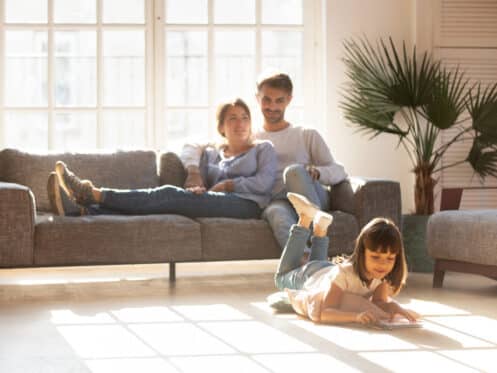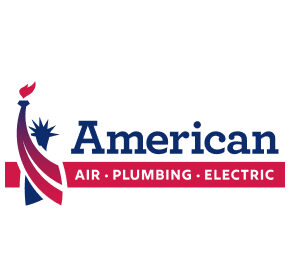Even though Florida has a reputation for having moderate winters, residents may nevertheless face issues with temperature fluctuations inside their houses. It can be particularly tricky to deal with hot and cold places in the winter. Creating a pleasant interior environment requires a thorough understanding of the factors that contribute to these variances. To help make your home more comfortable, let’s take a look at the top nine causes of hot and cold spots in Florida homes and how to avoid them.
1. Air Leaks
The most typical entry points for air to seep into a house are openings in the outermost layer, such as doors, windows and walls. In the winter, these holes reduce heating effectiveness by letting warm air escape. And while the hot air escapes, cold air seeps in, leading to temperature differences and uncomfortable hot and cold patches around the house. Homeowners can reduce air leaks by inspecting their structures carefully and then repairing any holes they find with weatherstripping, caulk or insulation. Better heating efficiency and a more consistently pleasant interior climate are the results of regular maintenance that includes testing and strengthening seals around windows and doors.
2. Dirty HVAC Filter
A home’s heating efficiency takes a serious hit when the air filter is dirty, especially during the winter in Florida, when the temperature sometimes gets pretty chilly. When dirt and dust settle into the filter, they block the airflow, making the heater work harder to heat the air. Consistent heating is essential for comfort in Florida’s mild winter environment, but ineffective warming and uneven temperature distribution might result from a blocked filter, leading to hot and cold spots. To keep HVAC systems running at peak efficiency and to keep warm air circulating evenly throughout the whole home, it’s vital to change the air filters regularly.
3. Sun Exposure
During the winter months, sun exposure is a major contributor to the formation of hot and cold spots in Florida houses. Rooms with windows facing south get more sunshine, making them warmer, while those facing north tend to stay colder. Even in Florida’s mild winters, this imbalance is apparent. Variations in thermal gain, caused by changes in the sun’s angle and intensity, may further affect the overall heating imbalance. Blinds and curtains, which control the amount of sunlight that enters a room, are useful for controlling the temperature inside.
4. Inadequate Ventilation
Inadequate ventilation is another common contributor to hot and cold spots in Florida homes. Insufficient air circulation traps cold air in specific areas, preventing the even distribution of warmth throughout the house. The first step a homeowner should take to ensure the home has proper ventilation is to check that all vents are open and unobstructed. Some homes may benefit from installing specially designed ventilation systems. Using exhaust fans in kitchens and bathrooms can also help improve air circulation.
5. Thermostat Misplacement
When it comes to heating houses in Florida, the positioning of the thermostat is really critical. Premature shutdowns and hot/cold areas may occur from erroneous temperature readings caused by improper placement, such as being too close to heat sources or in direct sunlight. Ideally, you should place the thermostat in the middle of the room, out of the way of drafts, intense sunlight and any type of equipment that produces heat. This allows the HVAC system to keep the house at a constant temperature and guarantees precise temperature detection. Placing thermostats in neutral locations also helps with general climate management, making the living environment more comfortable by eliminating temperature swings.
6. Ductwork Problems
In Florida, hot and cold areas often originate from faulty ductwork. Problems with the ducts’ ability to evenly distribute heated air include leaks, obstructions or inappropriate insulation. To maximize the effectiveness of the HVAC system and reduce temperature changes, it’s important to seal leaks, remove blockages and ensure correct insulation. Addressing these concerns requires regular examination and professional repairs. Homeowners also have the option of hiring a professional duct cleaner to get rid of all the buildup. Keeping the duct system in good working order allows homeowners to keep a comfortable and evenly heated house all year round.
7. Landscaping
Carefully planned landscaping lessens the influence of outside forces, allowing for a more constant and pleasant interior temperature year-round in Florida. Windbreaks and shade provided by trees and shrubs alter the amount of sunshine that reaches a given area, leading to hot and cold patches. Planting deciduous trees on the south and west sides of a property may help with landscape placement by shading it in the summer and letting in sunshine in the winter. To lessen the impact of cold drafts, plant evergreen trees on the north side of the house. For optimal sun exposure, it is important to prune and maintain it properly.
8. Old Windows
Florida residents can create a more pleasant and energy-efficient interior environment by adopting effective weatherproofing measures and replacing old windows with newer, more energy-efficient ones. Aging windows make houses hot and chilly in some areas. In the winter, cold air can seep in through single-pane or inadequately sealed windows, and in the summer, the warm air seeps in through them as well. Homeowners can solve this problem by installing energy-efficient windows with two or three panes of glass. Low-E coatings on windows improve insulation and decrease heat transmission. For optimal sealing, regular window maintenance is essential.
9. Outdated Heating System
Outdated heating systems consume a lot of power—whether it be gas or electric—to heat Florida homes. As a result, they cause heating expenses to skyrocket. They also endure lots of wear and tear, leading to hot and cold spots and frequent repairs. If you’ve had your system for more than 15 years, investing in a replacement is an excellent way to make your home more comfortable and to save money on energy expenses.
Using Ductless Mini-Split Systems for Even Heating
If you’re considering upgrading your system, make sure to check out the advantages of a ductless mini-split. With mini-splits, you can precisely regulate the temperature in your house, making sure that it stays consistently warm and doing away with cold and hot regions altogether. These systems make it possible to set separate temperatures for various rooms, thanks to zoned heating. Ductless systems reduce energy waste by connecting various interior units to a single outside compressor, thereby eliminating the need for large ducting. To maximize efficiency, they only heat the occupied areas of the home, allowing for personalized comfort. They work with a wide variety of house plans since installation is less disruptive and more adaptable.
American Air, Plumbing, and Electrical is here to help you get rid of hot and cold spots in your Sanford home. We provide AC, heater and ductless services, including repairs, installation and maintenance. We can also make your home more comfortable with indoor air quality testing, duct cleaning and thermostat upgrades. Give us a call today to learn more about keeping your home warm and cozy this winter with fewer hot and cold spots.


